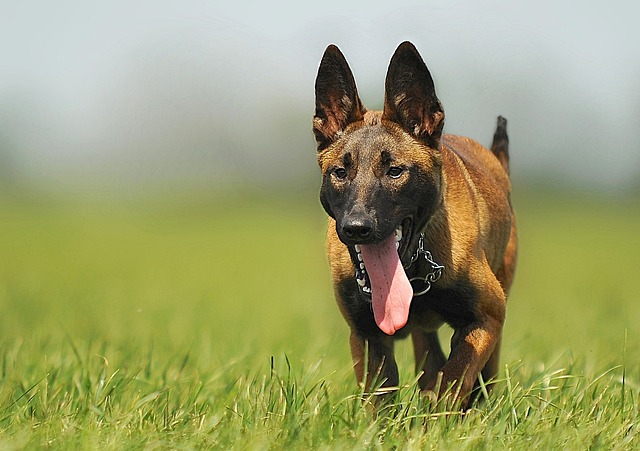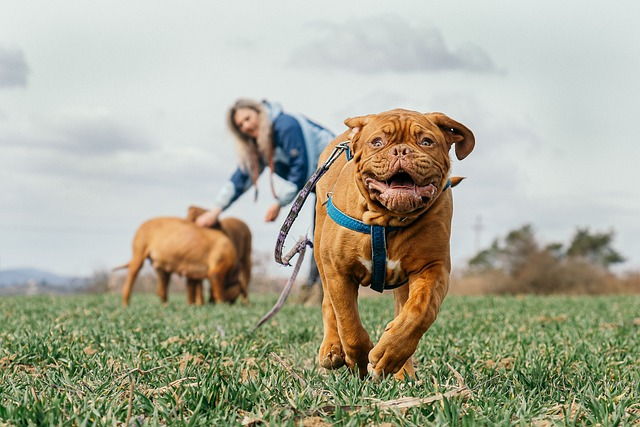Dog Can’t Move Back Legs and Shaking: Causes and Solutions

As devoted pet owners, few scenarios are more distressing than witnessing our cherished furry companions suffering or experiencing discomfort.
If you’ve ever found yourself facing the heart-wrenching situation of a dog can’t move back legs and shaking, accompanied by trembling or shaking, it’s natural to feel worried and unsure of what to do next.
This alarming sight can be indicative of various underlying issues, ranging from minor discomfort to more serious health concerns.
In this blog post, we aim to shed light on the possible causes behind this concerning behavior, providing you with valuable insights into what may be affecting your four-legged friend.
Understanding the potential reasons behind your dog’s mobility issues is crucial in order to seek appropriate veterinary care and support.
Key Takeaways
- Prompt veterinary attention is crucial for diagnosing and addressing the underlying cause of a dog’s back leg weakness and shaking.
- Desensitization and counter-conditioning techniques can be helpful but should complement, not replace, professional veterinary care.
- A supportive environment and adherence to prescribed treatments are vital for a dog’s recovery and well-being.

5 Causes of Weakness in a Dog’s Back Legs
Seeing your beloved dog struggling with weak or trembling back legs can be a distressing experience.
It’s important to remember that this symptom can be indicative of various underlying issues, ranging from mild discomfort to more serious medical conditions.
Some of the common causes behind a dog’s weakened hind legs and trembling, shedding light on potential health concerns that may require attention from a veterinarian.
1. Muscle Weakness and Atrophy:
According to the VCA Animal Hospital, one of the primary reasons for weak back legs in dogs can be muscle weakness and atrophy. This may occur due to a lack of exercise, aging, or a sedentary lifestyle.
As dogs age, they may experience a natural decline in muscle mass, leading to difficulties in mobility.
2. Arthritis and Joint Disorders:
According to the American Kennel Club, arthritis is a common condition in dogs, particularly in older individuals. It can lead to stiffness, pain, and weakness in the joints, including the hips and knees.
In severe cases, this can result in hind leg weakness and trembling.
3. Neurological Disorders:
According to the PetMD, Neurological issues, such as degenerative myelopathy or intervertebral disc disease, can affect a dog’s ability to control their back legs.
These conditions often manifest as weakness, wobbling, and, in some cases, trembling.
4. Injuries and Trauma:
According to Wagwalking, Physical injuries or trauma to the spine, hips, or legs can lead to temporary or permanent weakness in a dog’s back legs.
It’s essential to promptly consult a veterinarian if you suspect your dog has sustained an injury.
5. Metabolic Conditions:
Metabolic disorders like diabetes or hypothyroidism can lead to muscle weakness and trembling in dogs.
These conditions can disrupt the normal functioning of the body, affecting muscle tone and coordination.

8 Main Symptoms of Dog Losing Control of Back Legs
Witnessing a dog lose control of their back legs can be a distressing experience for any pet owner. This symptom, known as hind-end weakness or paresis, can be indicative of various underlying issues.
Recognizing the signs early is crucial for seeking timely veterinary care.
The key symptoms to look for if you suspect your dog may be experiencing a loss of control in their hind legs.
1. Difficulty Standing Up:
One of the initial signs may be difficulty in standing up or reluctance to do so.
2. Wobbling or Unsteadiness:
A dog experiencing weakness in their back legs may exhibit wobbling or unsteadiness while walking.
3. Dragging or Sliding Feet:
The dog’s hind feet may drag or slide along the ground rather than being lifted normally.
4. Crossing Back Legs:
The back legs may cross over each other while walking, indicating a lack of coordination.
5. Loss of Balance or Falling Over:
A dog with hind-end weakness may struggle to maintain balance and may even fall over while trying to walk.
6. Stiffness or Rigidity:
Stiffness or rigidity in the hind legs can be a sign of neurological issues or muscle weakness.
7. Incontinence:
Some dogs may experience difficulty controlling their bladder or bowels due to weakness in the hind end.
8. Pain or Discomfort:
Signs of pain, such as whining, yelping, or guarding the hind end, may accompany the loss of control.

Is Weakness in Your Dog’s Hind Legs Dangerous?
Weakness in your dog’s hind legs can signal various underlying issues. While occasional mild weakness may not be an immediate concern, sudden onset, pain, loss of coordination, or accompanying symptoms warrant prompt veterinary attention.
Early diagnosis and intervention are crucial for your pet’s well-being. Always consult your vet for guidance on your dog’s health.
When to Seek Veterinary Attention:
While occasional mild weakness may not always be a cause for immediate concern, there are certain signs that warrant prompt veterinary attention:
- Sudden Onset: If weakness in the hind legs appears suddenly or worsens rapidly, it should be addressed promptly.
- Pain or Discomfort: If your dog shows signs of pain or discomfort, such as whining, yelping, or reluctance to move, seek immediate attention.
- Loss of Coordination: Difficulty maintaining balance or a noticeable lack of coordination may indicate a serious issue.
- Accompanied by Other Symptoms: If weakness is accompanied by other concerning symptoms like loss of appetite, changes in behavior, or incontinence, consult a vet.
- Degenerative Conditions: In cases of known degenerative conditions, regular check-ups and monitoring of mobility are crucial.

Dog Losing Strength in Back Legs Prevention – 10 Tips
Maintaining the strength and mobility of your dog’s back legs is crucial for their overall well-being and quality of life.
While certain conditions may predispose dogs to hind leg weakness, there are steps you can take to promote their strength and prevent potential issues.
We’ll provide essential tips to help keep your furry friend’s back legs in top form.
1. Regular Exercise:
Engage your dog in regular, moderate exercise tailored to their age, breed, and health status. Activities like walking, swimming, and gentle playtime can help build and maintain muscle strength.
According to DR. Gina Phillips, DVM from PetMD, “Doggy daycares with pool options can be a great choice for pet parents who want their dogs to socialize, exercise, and have fun in the water while being supervised by trained staff.”
2. Balanced Diet:
Provide a balanced and nutritionally complete diet to support your dog’s overall health. Consult your veterinarian for specific dietary recommendations based on your dog’s individual needs.
3. Weight Management:
Maintain a healthy weight for your dog to reduce strain on their joints and muscles. Obesity can exacerbate existing weaknesses in the back legs.
4. Joint Supplements:
Consider adding joint supplements like glucosamine and chondroitin to your dog’s diet, especially if they are prone to joint issues or aging.
5. Regular Veterinary Check-ups:
Regular veterinary check-ups help monitor your dog’s health and catch potential issues early on.
6. Physical Therapy and Rehabilitation:
Explore options for physical therapy and rehabilitation exercises tailored to improve muscle tone and mobility.
7. Supportive Gear:
If your dog already exhibits signs of weakness, consider using supportive gear like harnesses or slings to assist them during walks or movement.
8. Non-slip Flooring:
Ensure that your home environment is safe for your dog by using non-slip mats or rugs to prevent accidents and falls.
9. Stimulating Mental Activity:
Engage your dog’s mind with interactive toys and games. Mental stimulation can help maintain their overall vitality and coordination.
10. Early Intervention:
If you notice any changes in your dog’s mobility or strength, seek prompt veterinary attention.
Early intervention can often make a significant difference in managing or slowing down the progression of any underlying conditions.

Treatments and recovery for weak back legs
Addressing weak back legs in dogs requires a combination of targeted treatments and supportive measures to promote recovery and improve their overall quality of life.
Whether stemming from age-related issues, injuries, or underlying medical conditions, a thoughtful approach to treatment can make a significant difference.
Various treatment options and recovery strategies for dogs experiencing weakness in their hind limbs.
1. Consultation with a Veterinarian:
The first and most crucial step is to seek professional advice from a veterinarian.
They will conduct a thorough examination, potentially including blood tests, X-rays, or other diagnostic procedures, to determine the underlying cause of the weakness.
2. Medication and Therapy:
Depending on the diagnosis, your veterinarian may prescribe medications to alleviate pain, reduce inflammation, or address specific underlying conditions. Physical therapy and rehabilitation exercises can also be employed to improve muscle strength and mobility.
3. Surgery:
In cases of structural issues, such as herniated discs or joint abnormalities, surgical intervention may be recommended.
Surgery can help alleviate pressure on the spinal cord or correct musculoskeletal problems contributing to the weakness.
4. Nutritional Support:
A balanced and nutritious diet, potentially supplemented with specific nutrients like omega-3 fatty acids and joint supplements, can aid in muscle maintenance and overall well-being.
5. Weight Management:
Maintaining a healthy weight is crucial, as excess weight can exacerbate weakness. Your veterinarian can provide guidance on appropriate portion sizes and dietary adjustments.
6. Assistive Devices:
Depending on the severity of the weakness, assistive devices like wheelchairs or harnesses may be recommended to help your dog move around comfortably and maintain their independence.
7. Hydrotherapy and Physical Rehabilitation:
Hydrotherapy, involving exercises in water, can be particularly effective for dogs with weak back legs. It provides low-impact resistance and helps improve muscle tone and mobility.
8. Environmental Modifications:
Ensure your home environment is conducive to your dog’s mobility. Use non-slip mats or rugs to prevent slips and falls, and consider ramps or steps for easier access to elevated surfaces.
9. Regular Monitoring and Follow-ups:
Keep in close communication with your veterinarian to track your dog’s progress. Adjustments to the treatment plan may be necessary based on their response to therapy.
10. Patience and Positive Reinforcement:
Recovery from weak back legs may take time, and it’s important to be patient and supportive. Offer plenty of encouragement, and celebrate small improvements along the way.

FAQs on Dog Can’t Move Back Legs And Shaking
FAQ 1: What should I do if I notice my dog exhibiting these symptoms?
Answer: If you observe your dog struggling with weakness in their back legs and shaking, it’s important to seek immediate veterinary attention.
Early diagnosis and intervention can make a significant difference in your dog’s prognosis and quality of life. Avoid trying to self-diagnose or treat the issue without professional guidance.
FAQ 2: Can I try to massage or exercise my dog’s back legs at home to help improve their condition?
Answer: While gentle massage and controlled, low-impact exercises may provide some relief, it’s crucial to consult your veterinarian before attempting any home-based treatments.
They can provide specific guidance tailored to your dog’s condition and needs.
FAQ 3: Are there any specific breeds that are more prone to experiencing weakness in their back legs?
Answer: Certain breeds, particularly larger or those predisposed to specific genetic conditions, may be more susceptible to issues affecting their back legs.
Breeds like German Shepherds, Corgis, and Dachshunds, for example, maybe more prone to certain spinal or musculoskeletal issues.
However, any dog can potentially experience back leg weakness due to a variety of factors.
FAQ 4: How long does it typically take to see improvements in a dog’s condition with treatment?
Answer: The timeline for improvement can vary widely depending on the underlying cause, the severity of the condition, and the effectiveness of the chosen treatment plan.
Some dogs may show improvement within a few weeks, while others may require more time.
It’s essential to have regular follow-up appointments with your veterinarian to track progress.
FAQ 5: Can back leg weakness be prevented in dogs?
Answer: While some factors may be genetic or age-related and therefore unavoidable, there are steps you can take to promote back leg health.
These include regular exercise, a balanced diet, maintaining a healthy weight, and providing joint supplements if recommended by your veterinarian.
Early intervention and regular veterinary check-ups can also help identify and address potential issues before they worsen.

Weakness and shaking in a dog’s back legs: the last word
In concluding thoughts on weakness and shaking in a dog’s back legs, it’s crucial to emphasize the importance of swift action and professional veterinary care.
These symptoms can be indicative of a range of underlying issues, from muscle weakness to serious medical conditions.
Early diagnosis and intervention play a pivotal role in a dog’s recovery and overall well-being. Seek immediate veterinary attention if you observe your furry companion experiencing these symptoms.
Remember, your veterinarian is the best resource for tailored advice and treatment plans specific to your dog’s individual needs.
Additionally, providing a supportive and loving environment, along with following any prescribed treatments or exercises, can greatly improve your dog’s chances of regaining strength and mobility.
With patience, care, and expert guidance, you can help your beloved pet lead a happier, healthier, and more active life.
This article was written by the Bulldogology team. With over 10 years of research experience in dog care. We gathered helpful information from many veterinarians and researched this topic. Hope this article is useful for you.
